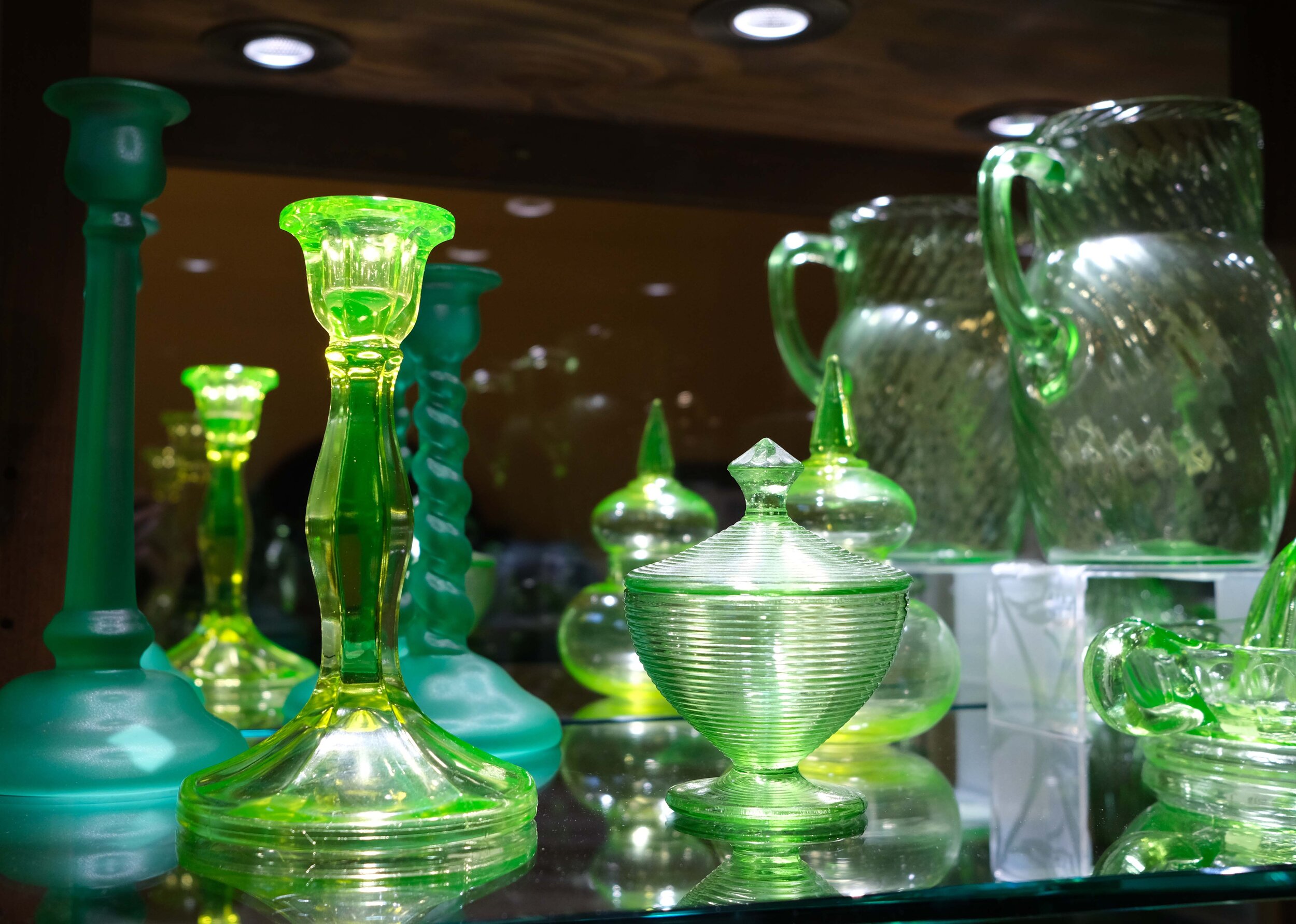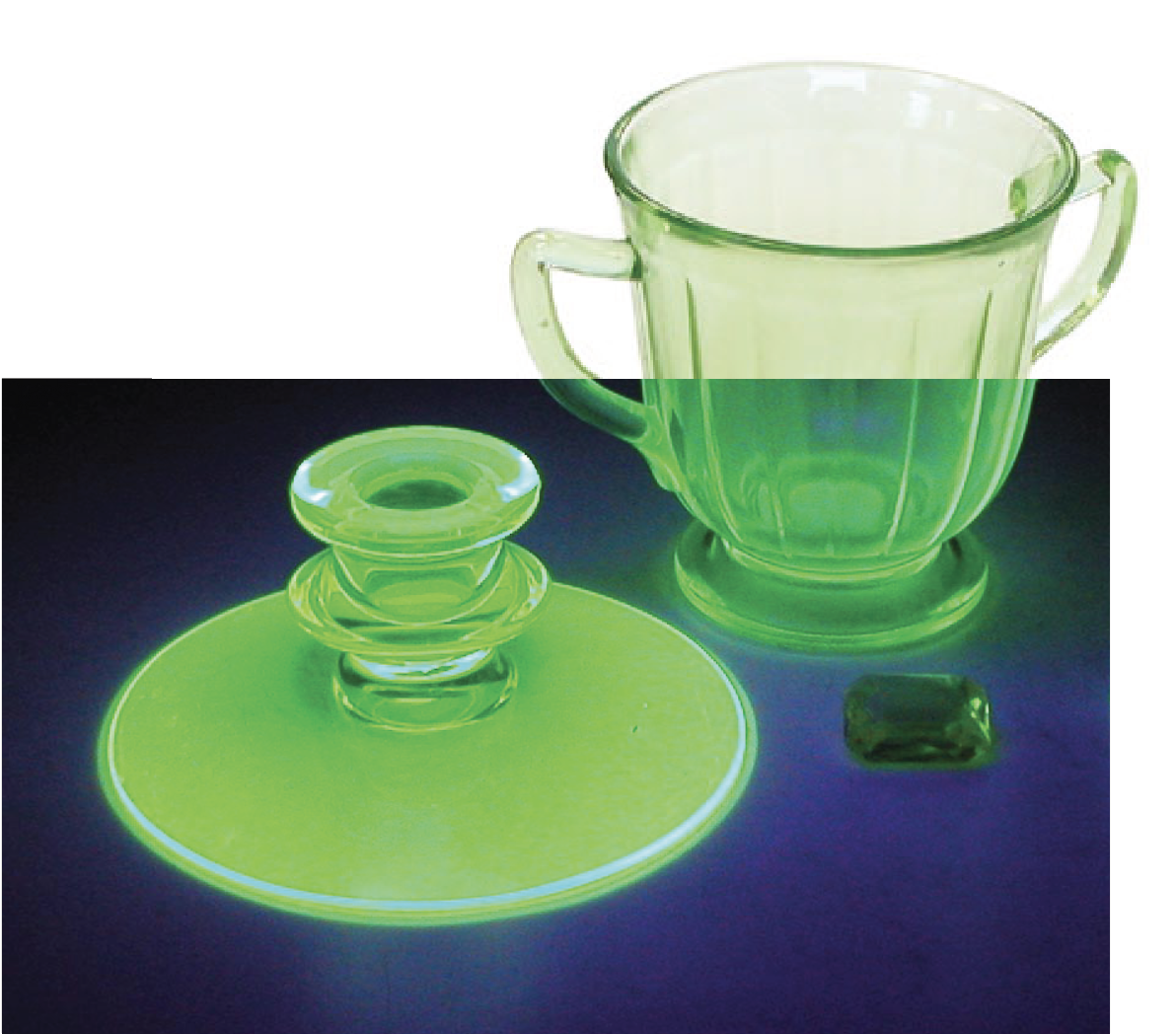The Vaseline Glass Collection of Betsy Briley Now on Display
The Vaseline Glass Collection of Betsy Briley
Some collectors enjoy finding Vaseline glass pieces for their novelty, others enjoy the glass for its unique beauty and coloration. Betsy Briley was attracted to collecting Vaseline Glass many years ago for both reasons. She also found that including family in her hobby was very enjoyable. She said it was actually necessary as her two small boys did not enjoy “going antiquing” so she simply asked them to help her look for her beloved green glass objects. This instilled the thrill of the search for them as well.
When discussing Vaseline glass in the United States, collectors are referencing a type of old glass that is yellow or yellow-green in normal light and glows bright green under a blacklight. The nickname "Vaseline" comes from the resemblance of some pieces to the original hue of Vaseline petroleum jelly. Whatever the color of the glass, it must fluoresce bright green under a blacklight or it does not qualify.
Vaseline glass is also called "uranium glass," and for good reason. Like all types of colored glass, minerals are added to the molten mixture during production to achieve the color. The type of mineral added to Vaseline glass is actually what makes it glow. As little as 0.1 to 0.2 percent of uranium dioxide is added to the formula of glass to give it the yellow-green tint. So, if you want to start looking for Vaseline glass pieces at your local antiques store, make sure you bring a black light flashlight along with you to test out its glowing properties. That bit of uranium in the glass also makes it slightly radioactive. Not to worry though, the radioactivity of the glass is so minute that it does not pose a threat when displayed in your home.
Vaseline glass was produced from the mid-1800s through the beginning of World War II, but its peak of popularity was from the 1880s through the 1920s. Large companies like Fenton Glass and Mosser Glass, both represented in the Briley Collection, made these wares, along with some other smaller shops. During WWII the government confiscated all supplies of uranium and halted all production of Vaseline Glass from approximately 1943 until the ban was lifted in November 1958. From 1959 onward, glass companies began making Vaseline glass again. However, because of the expense to obtain uranium dioxide, production was and is very limited.
This impressive collection of Vaseline Glass owned by Betsy Briley, will hopefully educate visitors to the existence of such glass, and possibly inspire others to collect. View this collection during the month of March at the Madison-Morgan Cultural Center, Tuesday-Saturday from 10AM-5PM. More info on visiting the Cultural Center here.


